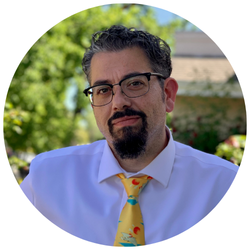Les espaces d'écriture sont des espaces profondément personnels. Nous y avons tous notre place. — peut-être même plus d'un — où nous aimons écrire. Avec un peu de chance, nous pouvons l'organiser comme bon nous semble.
L'essentiel est de créer un espace qui favorise la concentration et l'inspiration. Car c'est l'espace d'écriture idéal : qu'il s'agisse d'un point fixe chez vous ou d'un espace nomade, l'objectif de cet espace n'est pas d'être esthétique ou professionnel, ni d'impressionner les autres ou de faire bonne figure sur les réseaux sociaux. L'objectif est de créer une ambiance propice à l' écriture .
Bien sûr, cela dépend de votre personnalité et de ce qui vous convient. Créer un espace d'écriture propice à la concentration repose en grande partie sur la connaissance de soi.
Personnellement, j'ai un bureau face à la fenêtre, d'où je peux voir devant chez moi. C'est un bureau debout qui me permet de m'étirer et de me lever quand je le souhaite. J'ai aussi une chaise hors de prix qui m'aide à éviter les douleurs dorsales en position assise.

L'espace de travail de Bryan
Certains écrivains trouvent les fenêtres trop distrayantes ; il est donc plus facile de détourner leur espace en orientant leur bureau vers un mur. Stephen King conseillait aux écrivains de placer leur bureau dans un coin de la pièce :
« Chaque fois que vous vous asseyez pour écrire, rappelez-vous pourquoi ce n'est pas au centre de la pièce. La vie n'est pas un support pour l'art. C'est l'inverse. »
Il est également important de veiller à l'ergonomie et à l'éclairage. L'ergonomie ne s'applique pas seulement au clavier. Assurez-vous que votre bureau est à la bonne hauteur et que vous ne vous blessez pas en travaillant. Étirez-vous et levez-vous souvent.
Assurez-vous que l'éclairage de la pièce vous permette de voir ce que vous faites sans fatigue oculaire, tout en favorisant votre créativité. Personnellement, les ampoules Edison chaleureuses semblent fonctionner en l'absence de soleil. Parfois, tôt les matins d'hiver, la lueur des bougies me pousse à écrire dans mon journal.

Maintenir une température confortable est également essentiel. Si vous craignez d'avoir trop chaud ou trop froid, vous ne pensez pas à votre écriture.
Le désordre sur votre bureau est un autre aspect qui varie selon les auteurs. Personnellement, je peux gérer le désordre sur mon bureau, les restes de mes derniers projets et les cartes de visite de mes dernières apparitions – jusqu'à un certain point. Après cela, je n'arrive plus à me concentrer et je dois tout ranger pour recommencer ma collection de désordre. Le plus difficile est de savoir reconnaître si c'est le désordre qui freine ma productivité et non quelque chose d'autre qui m'affecte et me pousse à procrastiner.
Parfois, changer complètement d'espace de travail apporte de la nouveauté à votre routine et vous permet de vous concentrer sur votre travail avec un léger changement de rythme. Ce café, ce bar ou cette bibliothèque pourraient être le bureau idéal pour respecter votre prochaine échéance.

Espace de travail de Freewriter @msanniecathryn
Votre espace de travail numérique est également important.
Il existe de nombreuses façons d'améliorer votre concentration et votre productivité grâce aux outils numériques que vous utilisez. Le légendaire auteur de bandes dessinées Brian K. Vaughan a dit un jour :
« Le syndrome de la page blanche n'est qu'un autre mot pour les jeux vidéo. »
Supprimez toutes les applications de jeu de votre téléphone. Fermez les applications comme Discord ou Slack et activez le mode « Ne pas déranger ». Personnellement, la meilleure chose à faire est de changer ma façon d'écrire. De changer ma méthode de saisie.
Mon écriture libre me permet d'écrire mes romans, précisément parce qu'elle me procure un espace de travail sans distraction. Si une scène me pose problème, je peux écrire la journée avec un stylo et du papier, ou à la machine à écrire. Changer de méthode d'écriture active différentes zones du cerveau et me permet d'avancer, au lieu de consulter sans cesse les mêmes trois sites web pendant des jours.
Le plus important est de découvrir les astuces qui fonctionnent pour vous . Expérimentez.
Les essais et erreurs sont le meilleur moyen de déterminer votre espace de travail idéal pour votre processus créatif.
Retour à « Astuces pour améliorer la productivité de l'écriture »




























